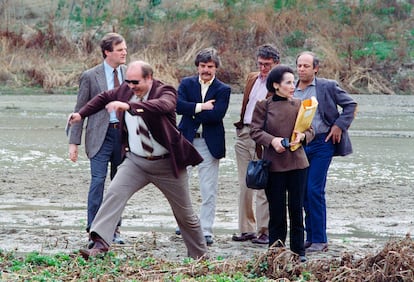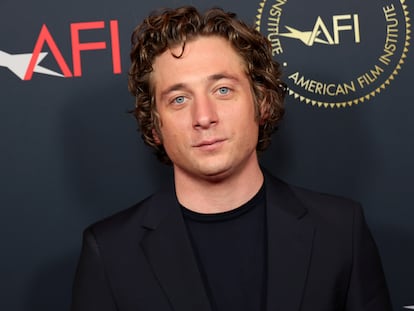‘Keep rolling’: The decision that resulted in the tragic deaths of two children and a Hollywood actor
‘Twilight Zone: The Movie’ was released 40 years ago while its director was on trial for involuntary manslaughter in one of the worst movie-set accidents ever

Upon its U.S. release on June 24, 1983, Twilight Zone: The Movie faced scathing criticism. In The New York Times, Vincent Canby’s review described it as “a flabby, mini-minded behemoth,” while Colin Greenland wrote in Imagine magazine that it was “not really very impressive as modern fantastic cinema from four of its grand masters,” Steven Spielberg, John Landis, Joe Dante and George Miller.
Critic Dave Kehr of The Chicago Reader found the segment directed by George Miller tolerable, but said the other three were “unexpectedly mediocre despite the impressive resumes of their directors.” Roger Ebert of The Chicago Sun-Times was perhaps the most magnanimous critic, although he ultimately damned the Warner Bros. production with faint praise: “Twilight Zone starts slow, almost grinds to a halt, and then has a fast comeback.” In tacit agreement, seemingly influenced by the recent extensive news coverage of the movie production, most critics avoided any reference to the negligence and utter lack of professionalism by those responsible for the tragic loss of three lives.
The movie grossed over $6 million in its opening weekend and ended up with a worldwide gross of $42 million. The production cost $10 million and was a financial success, but the movie didn’t become the massive hit executives had hoped for. Like in subsequent accident-marred productions such as The Raven, Top Gun and Jumper, the accidental deaths inadvertently fueled effective marketing campaigns.
Bad idea, disastrous execution
Werner Herzog once said that making movies is a high-risk sport, and that if no one dies during filming, it’s because “the gods of cinema are protecting their foolish parishioners.” Herzog was maybe referring to his own filming of Fitzcarraldo, when a 320-ton steamship began sliding down a hill as hundreds of extras scrambled for safety. Maybe he was talking about Francis Ford Coppola’s Apocalypse Now, an exaggerated display of audacity and megalomania that surprisingly only resulted in one dead water buffalo. However, even these two bold directors couldn’t have imagined a scene so perilous and badly executed as the one that tragically claimed the lives of actor Vic Morrow and two Vietnamese-American children in the Twilight Zone segment directed by John Landis.

The baffling lack of common sense occurred on July 23, 1982, around 2:30 in the morning at the Indian Dunes ranch near Los Angeles. During the filming of “Time Out,” the movie’s first segment, director John Landis decided to add a scene to humanize the main character, Bill Connor, played by Vic Morrow, a 53-year-old New Yorker with a solid television and film career. In the scene, Connor becomes outraged when a Jewish coworker gets a promotion he believes he deserved. Unforeseen journeys through time take Connor to Nazi-occupied Germany and 1950s Alabama. These trips expose him to the horrific truth of African-Americans being tragically targeted by the Ku Klux Klan, compelling him to reassess and ultimately eradicate his own deeply-rooted racist beliefs.
For the segment’s final scene, an alternate ending was suggested by one of the producers. In another trip back though time, Connor rescues two Vietnamese orphans whose village was being bombed by American helicopters. As Robert Weintraub explains in Slate, the scene “was an excuse for director John Landis to capture immense explosions on film.” Landis wanted to create a contemporary epic worthy of Apocalypse Now.
The filmmaker and his team made a series of reckless decisions that were almost unbelievable. First, they hired two child actors, Myca Dinh Le and Renee Shin-Yi Chen, who were seven and six years old respectively. This was in direct violation of California law, which explicitly forbade the employment of children at night. Additionally, hiring minors always required a special permit, which they didn’t bother to obtain. Everything was resolved with a hasty agreement involving Peter Wei-Te Chen, Renee’s uncle. He acted as a representative of the families and accepted a cash payment on their behalf, without any formal contract or insurance.
The deal was closed quickly by associate producers George Folsey Jr. without informing the casting crew or the on-set firefighters. Landis was eager to cut through the red tape and quickly shoot the scene. After all, the children would only appear briefly on screen.
Out-of-control explosions and a sudden panic attack
To recreate the bombing of the village, a Bell UH-1 Iroquois military helicopter was used. It was piloted by Dorcey Wingo, an Air Force veteran with combat experience in Vietnam. Wingo, who was new to filmmaking, participated in an explosives test before shooting the scene and noticed that the helicopter shook “abnormally” during the explosions. However, a colleague from the special effects department warned him not to say anything because the dictatorial Landis would fire him on the spot. Wingo decided to stay quiet.
As Stephen Farber and Marc Green write in their book Outrageous Conduct, a detailed chronicle of the accident, as soon as cameras rolled, pyrotechnic fireballs engulfed the helicopter. Wingo suffered a panic attack. The cameraman in the helicopter, Randall Robinson, said they then received conflicting instructions. The production assistant told them to leave the area as quickly as possible, but Landis kept ordering them to descend a little more. According to the testimony of another cameraman, Landis then callously said, “The shot is turning out great, but we’re going to lose the helicopter.”

The explosions forced an overwhelmed Wingo down into a river where the actors waded. As a hundred or so people looked on, the right skid of the aircraft crushed Renee, who was a few feet from Morrow. The helicopter then toppled over, and its main blade sliced through Morrow and Myca. According to Farber and Green’s book, there was shocked silence until Renee’s mother started shrieking as she kneeled over her daughter’s lifeless body. Morrow never got to deliver his scripted line: “I’ll keep you safe, kids. I promise. Nothing will hurt you, I swear to God.”
The disaster that changed the way movies are made
The official investigation into the accident concluded in October 1984. Despite negative press and criticism from specialized critics, the film had already achieved significant success. Experts determined that the tragedy resulted from both excessive explosions and the helicopter’s low flight path. In other words, it appeared to be a planning issue rather than specific human errors.
Landis, Folsey, Wingo, a production manager and an explosives expert faced charges of involuntary manslaughter. However, they were acquitted after a high-profile trial that took place from April 1986 to February 1987. Landis became a prime target for the tabloids who lambasted his callous arrogance, and Los Angeles District Attorney Lea D’Agostino, who called him a “white-collar killer.”
Folsey, initially portrayed by the media as a victim of Landis’s poor judgment, later faced widespread criticism for making controversial statements. “Morrow could have prevented the tragedy if he had followed my instructions,” said Folsey. “I repeatedly emphasized the importance of never losing sight of the helicopter.” The families of the victims successfully pursued a civil lawsuit against the film’s producers for reckless conduct and violation of labor laws, and received a substantial settlement.
Tayler Golsen writes in Far Out magazine that the only positive consequence of the disaster was that it changed the way movies are made. “The Director’s Guild of America began stricter enforcements for safety violations, while the Screen Actors Guild included new clauses in their contracts that allowed actors to step away from films should they not feel safe on set.” This effectively ended the irresponsible self-indulgence of tyrannical directors like John Landis, who was riding a wave of hit films like Animal House, The Blues Brothers, An American werewolf in London and Trading Places. During the trial, it seemed that Landis, perhaps on the advice of his lawyers, displayed a polite smugness that made him appear unaffected by the suffering he caused.
In a 1996 interview with The Financial Times, Landis finally seemed to express the contrition that his detractors had been wanting for over 20 years. “There is nothing remotely positive in this whole story. It was an enormous tragedy that I have not stopped thinking about for a single day. It continues to haunt me and has had a profound impact on my career, from which I may never recover.”
Years later, Steven Spielberg told his biographer, Joseph McBride, “No film is worth dying for.” He said the accident was the worst experience of his career and the reason why he was no longer friends with Landis. Today, industry professionals are increasingly aware of their ability and right to assert themselves when faced with excessive demands from producers or directors.
Sign up for our weekly newsletter to get more English-language news coverage from EL PAÍS USA Edition
Tu suscripción se está usando en otro dispositivo
¿Quieres añadir otro usuario a tu suscripción?
Si continúas leyendo en este dispositivo, no se podrá leer en el otro.
FlechaTu suscripción se está usando en otro dispositivo y solo puedes acceder a EL PAÍS desde un dispositivo a la vez.
Si quieres compartir tu cuenta, cambia tu suscripción a la modalidad Premium, así podrás añadir otro usuario. Cada uno accederá con su propia cuenta de email, lo que os permitirá personalizar vuestra experiencia en EL PAÍS.
¿Tienes una suscripción de empresa? Accede aquí para contratar más cuentas.
En el caso de no saber quién está usando tu cuenta, te recomendamos cambiar tu contraseña aquí.
Si decides continuar compartiendo tu cuenta, este mensaje se mostrará en tu dispositivo y en el de la otra persona que está usando tu cuenta de forma indefinida, afectando a tu experiencia de lectura. Puedes consultar aquí los términos y condiciones de la suscripción digital.
More information
Archived In
Últimas noticias
Welcome to the post-religion era: The idea of Christianity as the absolute truth has become obsolete
‘I thought you would like it’: The risky sexual practice popularized by TV shows and TikTok
The digitalization of tourism: ‘They promise experiences and gave us the worst possible one’
Mexican peso defies uncertainty with forecasts of a new period of stability in 2026
Most viewed
- Sinaloa Cartel war is taking its toll on Los Chapitos
- Oona Chaplin: ‘I told James Cameron that I was living in a treehouse and starting a permaculture project with a friend’
- Reinhard Genzel, Nobel laureate in physics: ‘One-minute videos will never give you the truth’
- Why the price of coffee has skyrocketed: from Brazilian plantations to specialty coffee houses
- Silver prices are going crazy: This is what’s fueling the rally











































